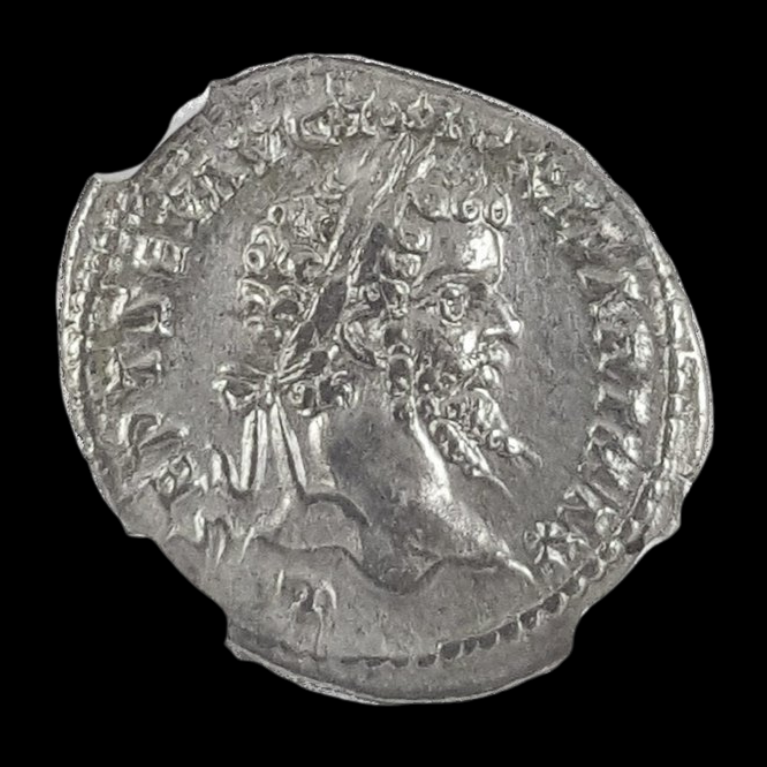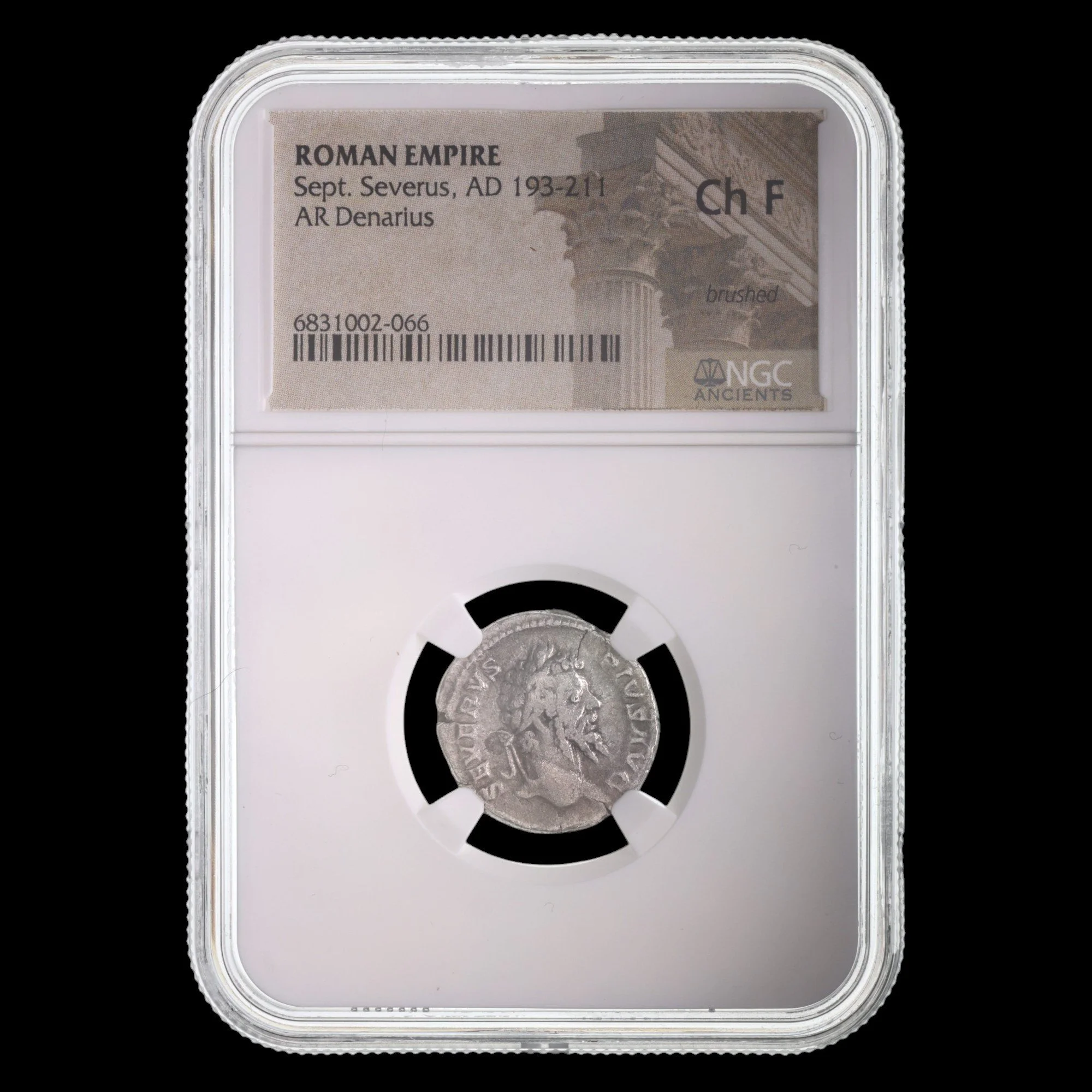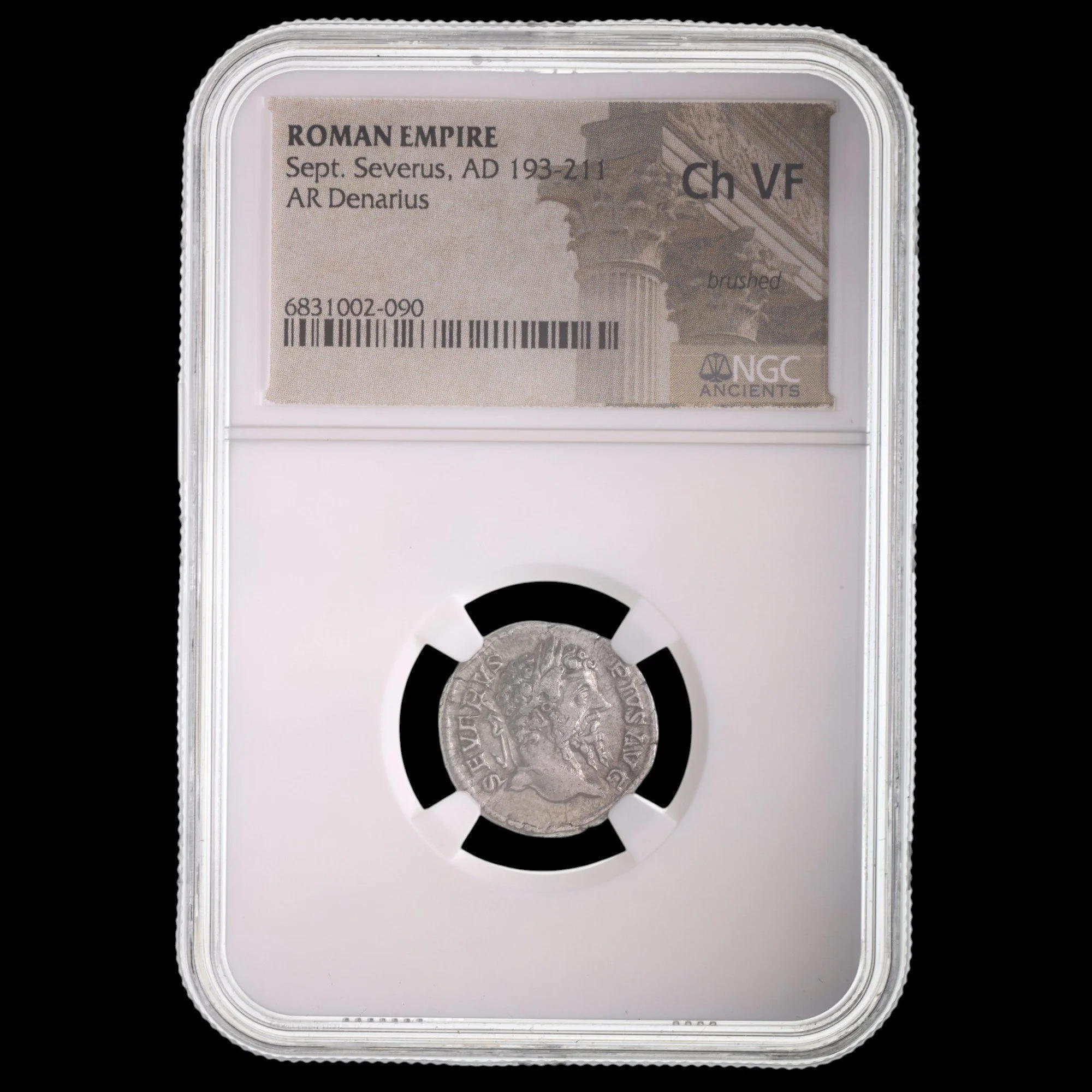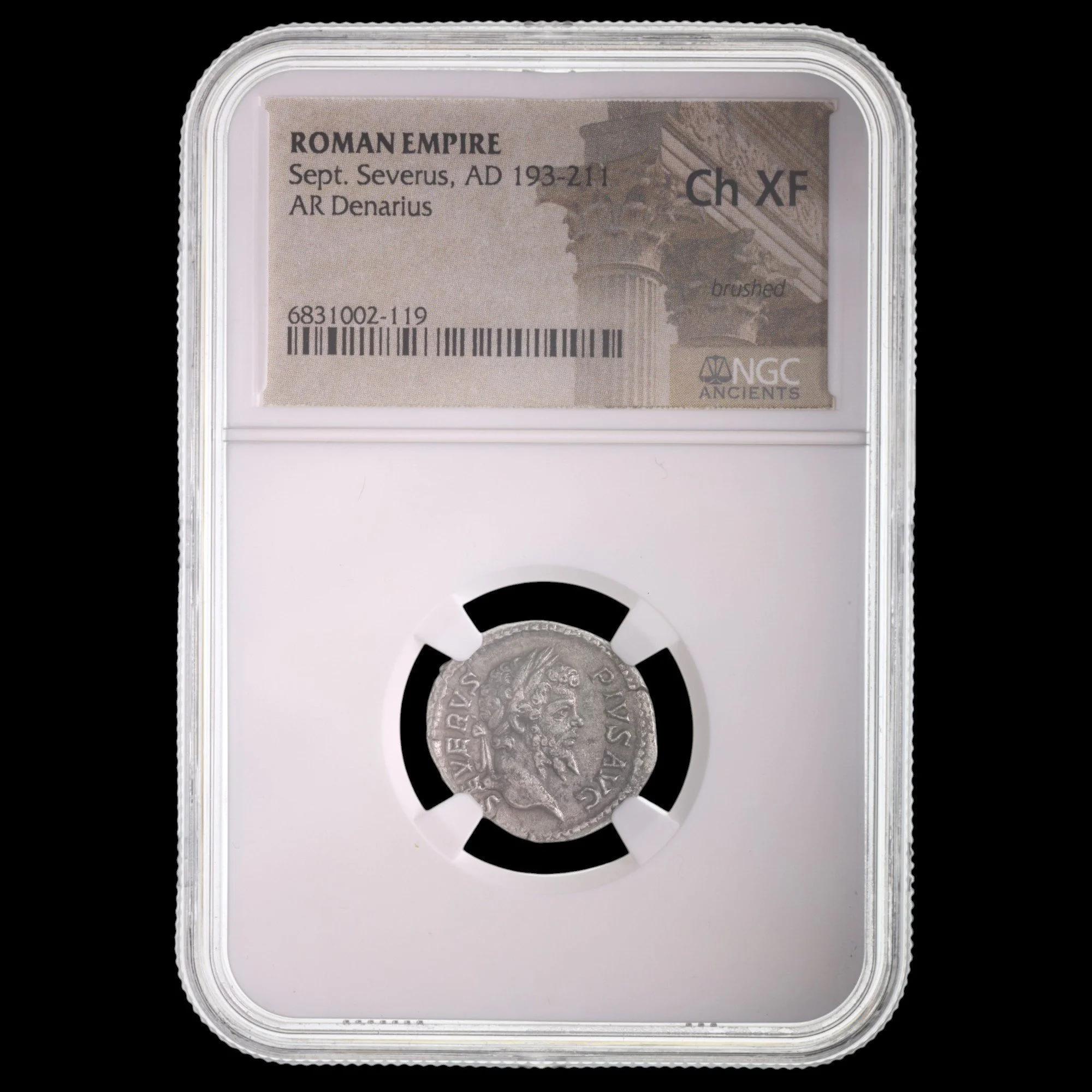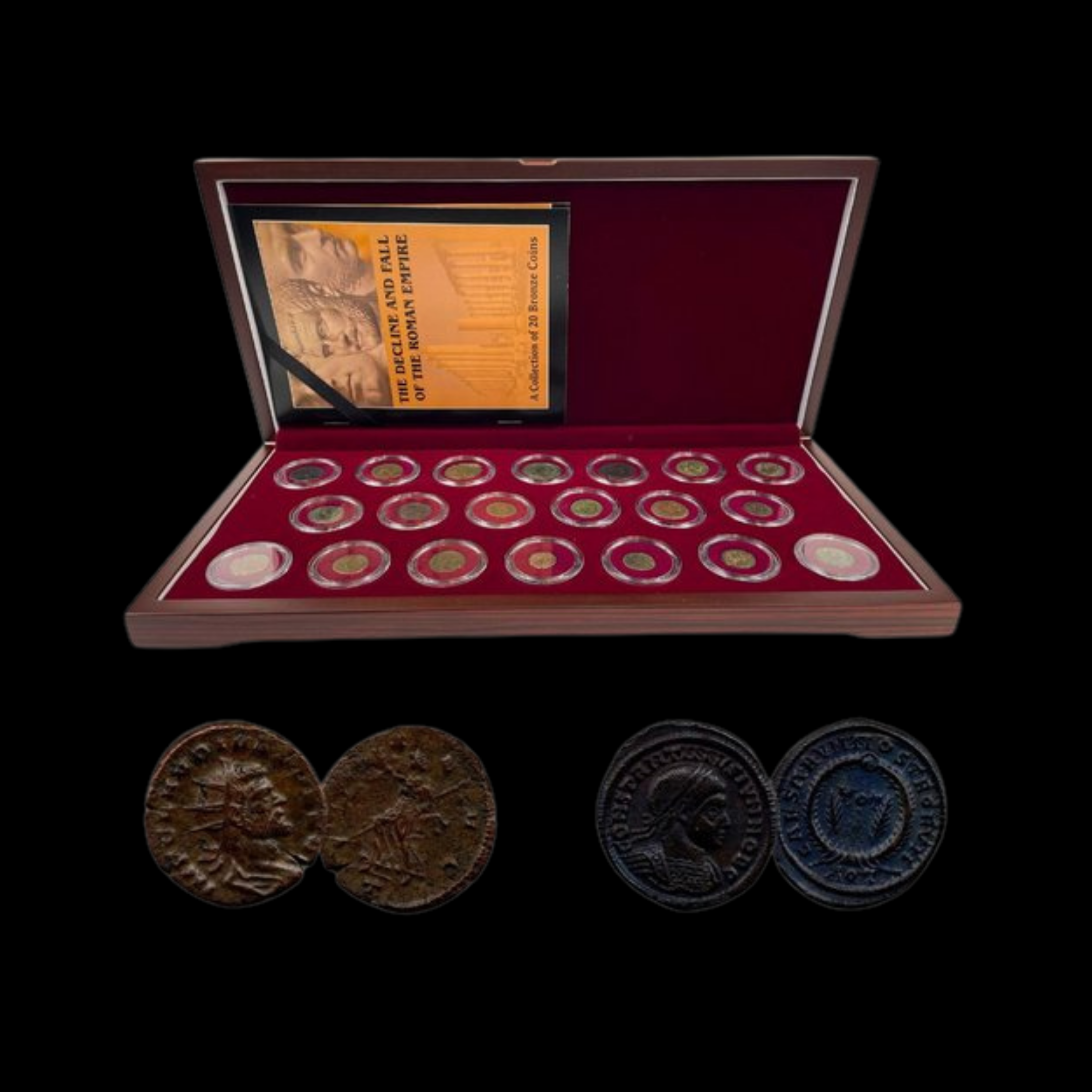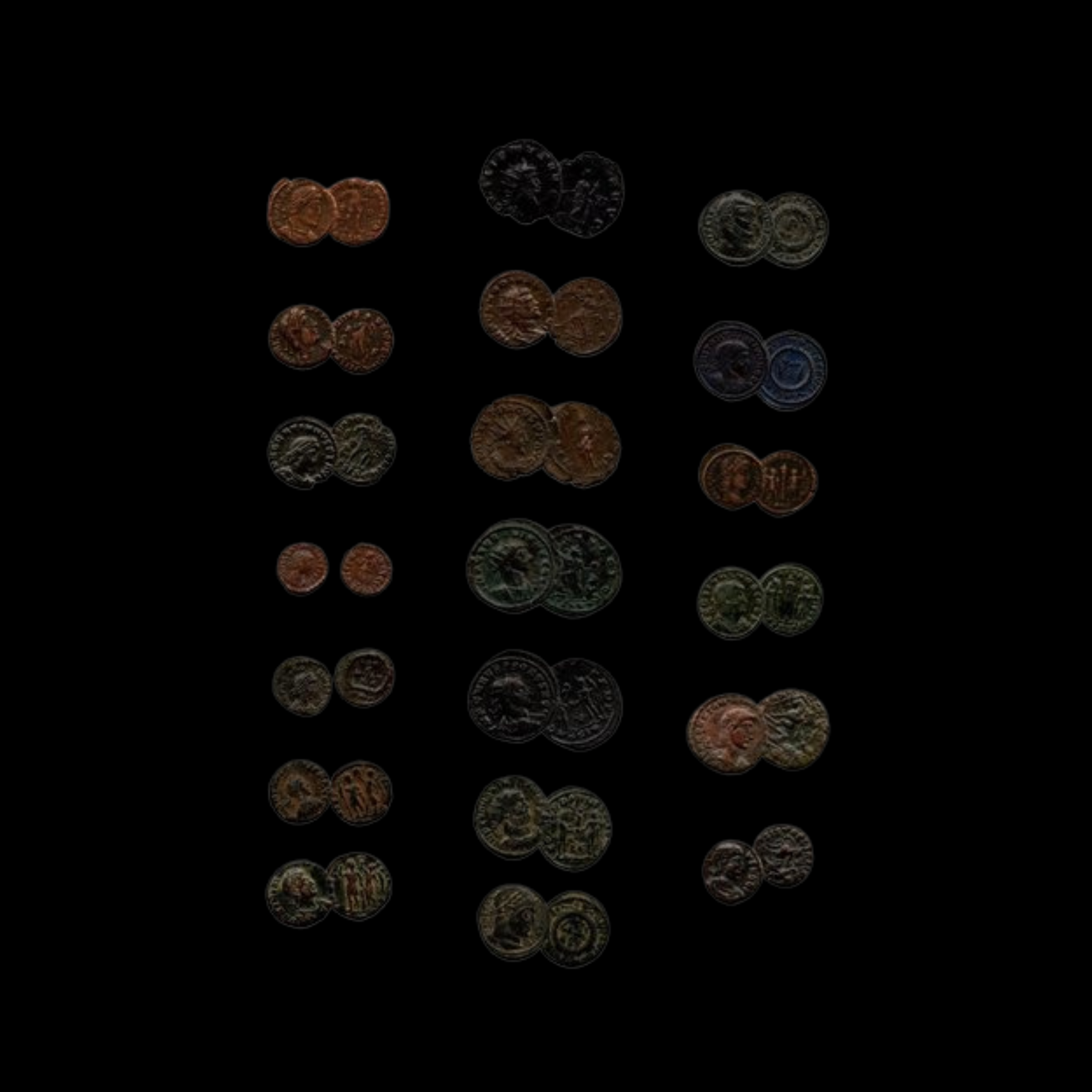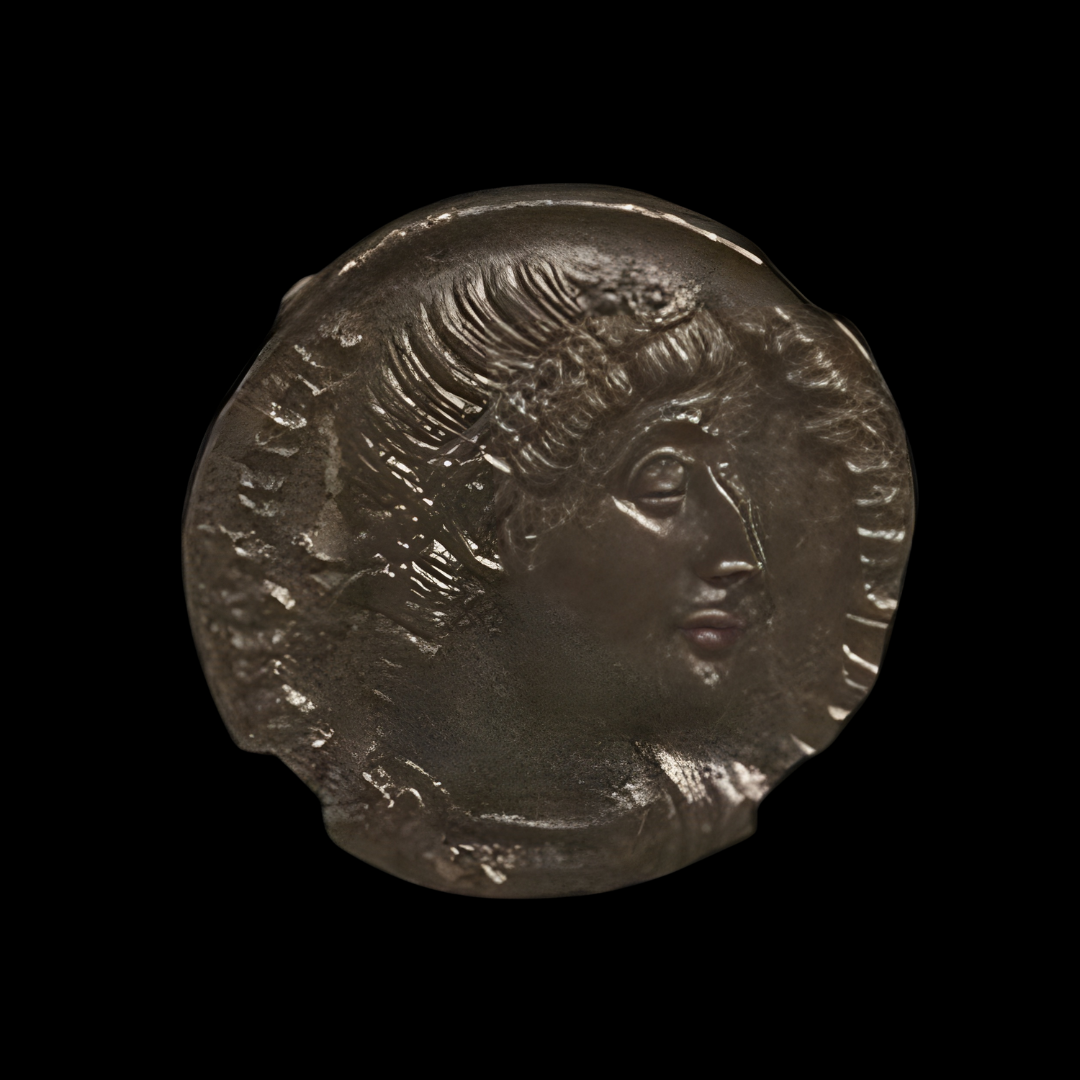 Image 1 of 7
Image 1 of 7

 Image 2 of 7
Image 2 of 7

 Image 3 of 7
Image 3 of 7

 Image 4 of 7
Image 4 of 7

 Image 5 of 7
Image 5 of 7

 Image 6 of 7
Image 6 of 7

 Image 7 of 7
Image 7 of 7








Roman Bronze Coin – Emperor Constantine the Great (about 1,700 years old) – Small AE Coin of Rome’s First Christian Emperor – NGC Certified
The coins shown are representative examples of the grade and type, but not the actual specimens for sale. For details on NGC’s grading standards and definitions, please refer to our NGC Grading page.
This small bronze coin was issued during the revolutionary reign of Emperor Constantine I, whose conversion to Christianity and sweeping administrative reforms fundamentally transformed the Roman Empire. Minted in the early to mid-4th century CE, this coin represents the pivotal transition from the traditional Roman religious system to state-sponsored Christianity and the empire's shift eastward.
Coin Description:
Front side: Portrait of Constantine the Great facing right, typically shown either with a laurel wreath in earlier issues or wearing a pearl diadem or rosette crown in later ones, surrounded by Latin text identifying him with his imperial titles
Back side: Could feature various designs including military imagery, victory symbolism, city gates (representing newly founded Constantinople), or Christian symbols like the Chi-Rho (☧) in later issues
Technical Details:
Bronze alloy composition
Small bronze denomination (modern collector designation AE3 or AE4)
RIC (Roman Imperial Coinage) reference number not visible in description
NGC (Numismatic Guaranty Corporation) certified
Minted approximately 306-337 CE (during his reign)
Condition not specified (likely Fine, showing expected wear from circulation)
Historical Significance:
This coin was issued during Constantine's transformative reign when the Roman Empire underwent fundamental religious and administrative changes. After claiming divine vision before his victory at the Milvian Bridge in 312 CE, Constantine gradually supported Christianity, eventually making it the dominant religion throughout the empire. His founding of Constantinople (modern Istanbul, Turkey) in 330 CE shifted the empire's power center eastward, laying the groundwork for the later Byzantine Empire. These small bronze coins circulated widely among ordinary citizens during this pivotal period and often show the evolution of imperial imagery from traditional Roman symbolism toward Christian iconography. Constantine's long reign restored stability after the chaos of the 3rd century and established a new imperial model combining absolute power with Christian divine right that would influence European governance for centuries.
The coins shown are representative examples of the grade and type, but not the actual specimens for sale. For details on NGC’s grading standards and definitions, please refer to our NGC Grading page.
This small bronze coin was issued during the revolutionary reign of Emperor Constantine I, whose conversion to Christianity and sweeping administrative reforms fundamentally transformed the Roman Empire. Minted in the early to mid-4th century CE, this coin represents the pivotal transition from the traditional Roman religious system to state-sponsored Christianity and the empire's shift eastward.
Coin Description:
Front side: Portrait of Constantine the Great facing right, typically shown either with a laurel wreath in earlier issues or wearing a pearl diadem or rosette crown in later ones, surrounded by Latin text identifying him with his imperial titles
Back side: Could feature various designs including military imagery, victory symbolism, city gates (representing newly founded Constantinople), or Christian symbols like the Chi-Rho (☧) in later issues
Technical Details:
Bronze alloy composition
Small bronze denomination (modern collector designation AE3 or AE4)
RIC (Roman Imperial Coinage) reference number not visible in description
NGC (Numismatic Guaranty Corporation) certified
Minted approximately 306-337 CE (during his reign)
Condition not specified (likely Fine, showing expected wear from circulation)
Historical Significance:
This coin was issued during Constantine's transformative reign when the Roman Empire underwent fundamental religious and administrative changes. After claiming divine vision before his victory at the Milvian Bridge in 312 CE, Constantine gradually supported Christianity, eventually making it the dominant religion throughout the empire. His founding of Constantinople (modern Istanbul, Turkey) in 330 CE shifted the empire's power center eastward, laying the groundwork for the later Byzantine Empire. These small bronze coins circulated widely among ordinary citizens during this pivotal period and often show the evolution of imperial imagery from traditional Roman symbolism toward Christian iconography. Constantine's long reign restored stability after the chaos of the 3rd century and established a new imperial model combining absolute power with Christian divine right that would influence European governance for centuries.


